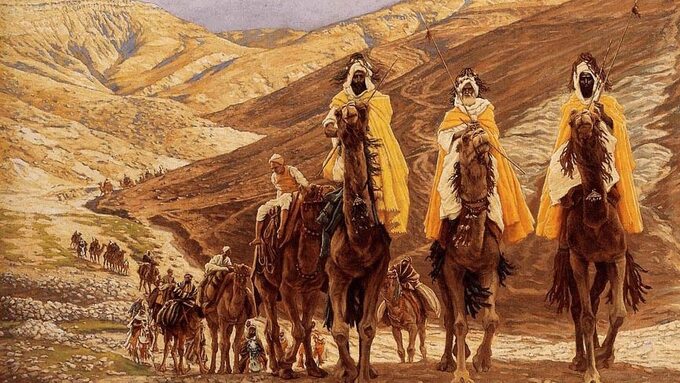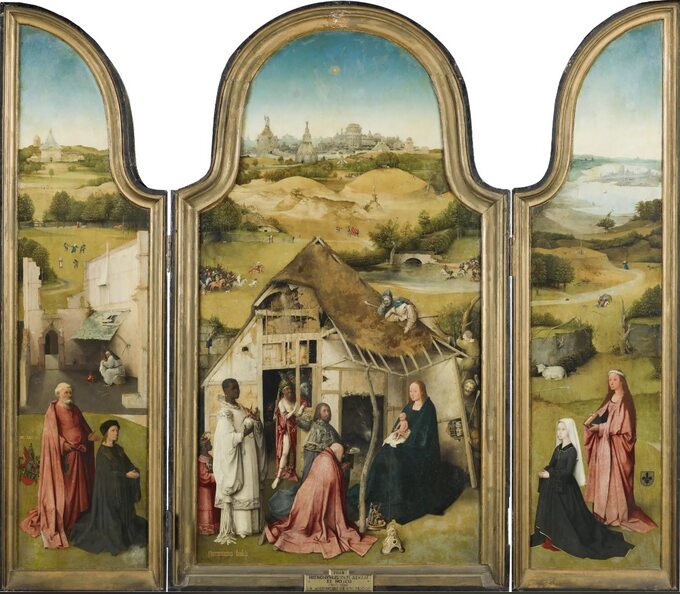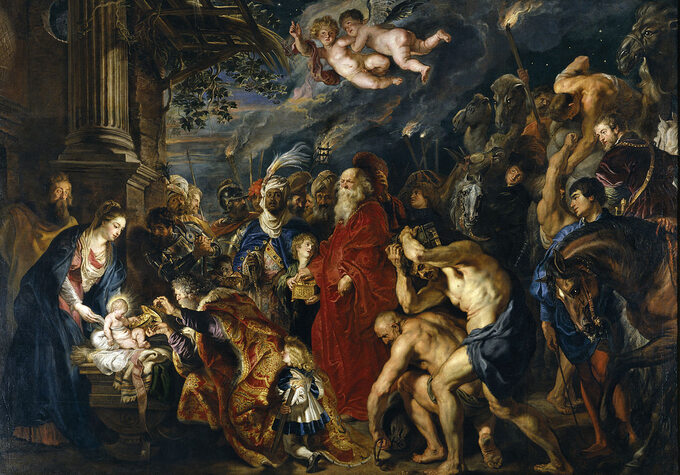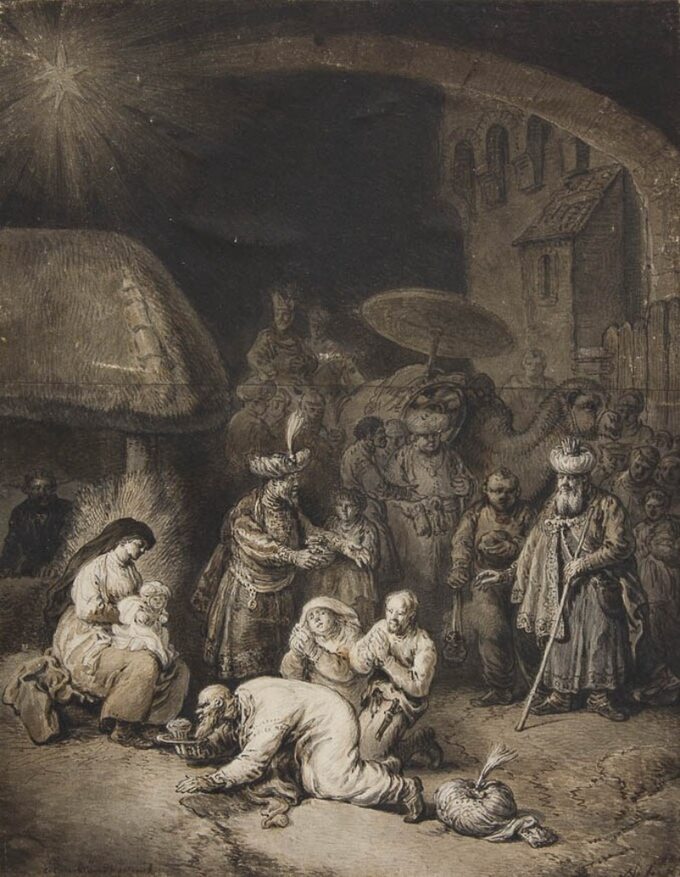Epiphany is commonly known as Epiphany. Who were the three wise men who came to Bethlehem after Jesus was born? What do Scripture, Christian tradition, and other historical records say about them?
The Three Wise Men are an important part of the Christian tradition, although we don't even know exactly who they were or where they came from. They are traditionally considered saints in the Catholic Church, the Orthodox Church, and the ancient Eastern Churches.
Three Wise Men in the Gospel
Gospel of St. Matthew is the only one of the four canonical gospels to mention the wise men. In it we read:
“When Jesus was born in Bethlehem of Judea, during the reign of King Herod, behold, wise men from the east came to Jerusalem and asked, “Where is he who is born king of the Jews? For we have seen his star in the east, and we have come to worship him.
When King Herod heard this, he was afraid, and all Jerusalem with him. He gathered together all the chief priests and scribes of the people and asked where the Messiah would be born. They answered him: In Bethlehem of Judah, for it is written by the prophet: And you, Bethlehem, in the land of Judah, are not the least among the chief cities of Judah, for out of you will come a ruler who will be. Shepherd of my people Israel.”
Then Herod secretly called the wise men and learned from them the exact time of the star's appearance. And he took them to Bethlehem, and said to them: Go thither and inquire carefully for the child, and when you have found him, tell me that I also may go and worship him. And as soon as they heard about the king, they set off.
And behold, the star which they saw in the east went before them until it came and stood where the child was. When they saw the star, they were very happy. They entered the house and saw the child with his mother, Mary; They fell down and worshiped him. And they opened their treasures and offered him gifts: gold, frankincense, and myrrh.
And having been warned in a dream not to return to Herod, they returned to their country by another route. (Mt. 2:1-12)

As we see, St. Matthew does not mention the number of wise men and where they came to Bethlehem. We get this information indirectly from other passages of the Holy Scriptures, including: the Psalms and the Old Testament.
Psalm 72 (11) says:
“And all kings shall worship him,
All nations serve him.”
In the book of the prophet Isaiah we read:
“stand up! Shine, O Jerusalem, for your light has come and the glory of the Lord has risen upon you. For, behold, darkness covers the earth, and thick darkness covers the peoples; But the Lord will shine upon you, and his glory will appear upon you.
And nations shall come unto thy light, kings unto the brightness of thy exaltation. Look around and see: all these people are coming towards you. Your sons come from afar, your daughters are in your arms.
Then you will see and shine, your heart will be moved and enlarged, because the wealth of the seas will come to you, the resources of peoples will come to you. Many camels will lay upon you, droms from Midian and Ephah. They will all come from Sheba, offering gold and incense and singing joyful songs to the Lord.” (Isaiah 60:1-6)
Nowhere in Scripture is it stated how many wise men came to worship Jesus (three, six, and even more wise men were recorded throughout history). It is also not specified when this event took place. In Christmas nativity scenes, you can often see a scene in which the newborn Jesus is surrounded by Mary, Joseph, the three kings and the shepherd. However, this is only an artistic vision that may have little to do with reality.
An angel announced the birth of Jesus to the first shepherds who were tending their sheep nearby. They were probably the first to reach the stable where Jesus was born. The wise men of the East did not have to come to Bethlehem on the same day. It happened probably a few or a dozen or more days later, but certainly while Mary and Saint were still in town. Joseph and the child.
Attempts at scientific explanation
Where could the wise men come from? Who were the three kings? Not only Bible scholars, but also historians have tried to answer these questions over the years.
The three kings are usually called sages or magicians. These words are derived from, among others: the Latin word magician and Greek I'm afraid. Greek I'm afraid Derived from the Old Persian (Avestan) word magician, magâunô, which denoted the religious caste to which Zarathustra belonged. The priests belonging to this caste were famous for their knowledge of astrology, which was a highly valued science in their culture. The derivative of the term magician Eventually the word magic came to be equated with occult practices and even the occult. The word “Mogs” in reference to the three kings may derive from science, astrology, the knowledge of “reading” the stars and omens by observing the sky, but it is not related to the practice of witchcraft.

Monarchs are often referred to as kings. It is not mentioned in St. Matthew, but mention of the possible royal origin of the wise men is found in the Old Testament. Psalm 72 (11) mentioned earlier says:
“And all kings shall worship him,
All nations serve him.”
Psalm 68 (29-30) says:
“God, show me your power,
God's power with which you have worked for us
From your temple above Jerusalem!
The kings will bring you gifts!'
Around 500 CE, Bible commentators believed that the wise men who worshiped Jesus were monarchs. The most serious opposition to this came centuries later from John Calvin, the founder of Calvinism, who was responsible for one of the schisms in the church during the Reformation.
Historian Anders Hultgaard says that the story of the wise men of St. Matthew was influenced by a Persian legend about magicians who were told by a star that a powerful ruler would be born.

According to some scholars, the three kings represent three stages of human life, as well as three cultural spheres. This is reflected in the art, which usually shows Kacper offering gold to an elderly man, often with a white beard. Melchior is represented as a middle-aged man who gives incense to Jesus. Balthazar is a young man, usually black, who offers myrrh as a gift.
The gifts that the wise men gave to Jesus have been interpreted in various ways. It is noted that gold, frankincense and myrrh are not gifts offered to the king. The religious significance of these things may mean that the wise men of the East saw Jesus as the Messiah, someone more than an earthly ruler (John Chrysostom wrote about this, among others).
Scripture does not mention what happened next with the gifts of the wise men. Over time, many more and more improbable theories have emerged. One story tells of the theft of gold by two thieves who were later crucified with Jesus. Another suggests that the gold was used by Mary and Joseph when they had to flee Bethlehem from Herod, who wanted to kill Jesus. There is also a story that myrrh was used on the body of Jesus after his crucifixion.
in the monastery of St. Paul in Greece, on Mount Athos, is a 15th-century chest containing the supposed gifts of the wise men.
Casper, Melchior, Balthazar
For a long time, there was a great debate about the names of the three wise men who came to worship Jesus. Three names are commonly used: Casper (Jaspar, Gaspar, Gathaspa, Yaspas), Melchior (Melichior), and Balthazar (Balthasar, Balthazar, Balthasar, and Bithisaraa).
Balthazar is sometimes referred to as King of Arabia or Ethiopia. Mechior as king of Persia and Caspar (Gaspar) as king of India. Armenian tradition also identifies the wise men of Bethlehem as Balthazar of Arabia, Melchior of Persia, and Caspar of India. These names probably derive from a Greek manuscript written in Alexandria around 500 AD, which was translated into Latin under the title “Excerpta Latina Barbari”.

One of the Three Wise Men, Casper, also appears in a Gnostic apocryphal writing probably written in the first half of the 3rd century in Edessa. It is called “The Acts of Thomas” (the Apostle). On its sides is depicted the figure of Gondopharis (Greek: Gondopharēs), the ruler of the Indo-Parthian kingdom. It is Gondofar who is identified with Casper, who is supposed to look for Jesus in Bethlehem. The name of the Afghan city of Kandahar, whose founder he was, comes from him.
The origin of the sages is of course still unclear, although many theories can be considered probable. Their names also vary depending on where Christians live. For example, in Syria, the three sages are referred to as: Larvandada, Gushnasafa and Hormisdasa. In Ethiopia they are called: Hor, Karsudan and Basanater, and in Armenia: Kagfa, Badadakharida and Badadilma.
It is not known what happened to the three kings after returning to their countries. According to one tradition, the meeting with Jesus moved them so much that they converted and became Christians. Some stories say that all of them suffered martyrdom. The place of their burial is, of course, unknown, although various theories have emerged on this matter. The traveler Marco Polo, who lived at the turn of the 13th and 14th centuries, claimed to have been shown the tombs of the Three Wise Men in the town of Save, south of Tehran.
A reliquary with the remains of the three monarchs is located in Cologne Cathedral in Germany. These relics were discovered by Empress Helen, the mother of Constantine the Great, during her pilgrimage to the Holy Land. He had to take the remains of the sages to Constantinople, from where they went to Milan. In 1164, Emperor Frederick Barbarossa brought them to Cologne.
Also read:
Epiphany. Feast of the Epiphany. More than three kingsAlso read:
Leonardo Da Vinci. A genius that still amazes meAlso read:
14 events that took place on Christmas Day
(translate tags)three kings
